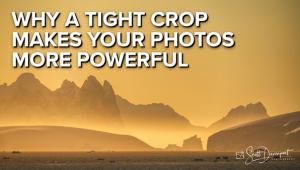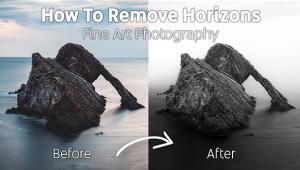The Power Of Publicity; Promotion Builds Potential Client Awareness Page 2
SB: Is giving art prints to charities for fundraising auctions
a valuable PR technique for photographers?
ET: Many networking, fundraising, and charitable events offer
opportunities for photographers to give away art prints or special sittings.
But don't expect to get much visibility from them. Aside from the mention
of your name and the building of goodwill through generosity in front of the
crowd, participation is likely to gain nothing more than warm fuzzies for the
donor. A more effective course of action might be to offer new art to display
each month at a popular café, coffee shop, or bookstore instead. You'll
have a larger audience over time and could earn business in the long run.
SB: How do photographers generate publicity if they are not
ready to hire a PR firm?
ET: They should start by making a list of goals that they wish
to achieve through their publicity efforts. Is the number one priority to drive
traffic to an online gallery? Is booking more weddings on the top of the list?
Setting clear goals will help to develop the tactics needed to turn intentions
into reality.
 |
Creating a strategic, targeted plan is a must for photographers who want to
promote themselves. Research the types of promotional activities that will help
you attain your goals. Is it authoring an article for a regional wedding magazine?
Starting a blog to drive online traffic? Then, put those activities into a realistic,
step-by-step plan that is truly manageable and that takes your time, skills,
and confidence level into account.
Trishann Couvillon: Most of my marketing and PR education stems
from studying on my own. I've always known that marketing was very important
to establish and successfully grow my business. So I began by asking a great
deal of questions and talking to other professionals who had marketing or PR
experience.
Another method of learning was by attending meetings and workshops held by reputable
photographic organizations. Professional Photographers of the Greater Bay Area
(PPGBA), the American Society of Media Photographers (ASMP), and Professional
Photographers of America (PPA) are some examples of organizations that may help
to educate those who seek additional knowledge about our industry. I knew that
a hired expert would eventually be necessary at some point, but it was invigorating
to learn a bit about the PR industry on my own and undertake some initial publicity
efforts with my limited resources.
SB: What made you decide to work with a PR firm?
TC: As a sole proprietor and an independent photographer with a very
specific and unique visual point of view, I choose to work without an assistant
for most of my events. It's important to know and accept your limitations.
I was at a point in my career where expert help could take my business to the
next level. Therefore, I sought out a PR firm that understood my specific goals
and would help me to reach them. Knowing and taking into account the value of
my time and energy, having a PR firm assures me that someone is scouting and
contacting me when the appropriate opportunities arise. It is comforting to
know that with my agency's help I can always utilize their promotional
services and still stay focused on my photography without missing precious opportunities.
Working with them is a learning experience. They're a valuable resource
for ideas and have helped discover a wide variety of ways to market my business
that I'd never considered before. It's funny, but many photographers
that I've spoken with about marketing and PR think that it is no big deal
and that they are capable of successfully handling the marketing of their companies
by themselves. That thought pattern is akin to Uncle Joe thinking that he is
perfectly qualified to take professional event or wedding photos because he
has read a few online "how-to" articles. Now, I really appreciate
the value of working with bona fide media professionals. PR firms are devoted
to knowing the particulars of the media industry. It is their full-time occupation
to help gain exposure for their clients. My business is growing from their assistance
and they are my allies, offering more exposure than I could have ever mustered
on my own.
SB: What recommendations would you make to a photographer who
is seeking an outside firm?
TC: Scrutinize the PR firm's client list. It's
helpful to see what experiences they have had. Ask to talk to some of the other
companies that the agency is representing. If editorial media coverage is your
goal, ask to see several media placements that they have secured recently, and
what their processes are to achieve that level of coverage. Do they rely solely
upon press releases or employ other methods? How, exactly, will they pitch your
story to the media?
Just like in the world of professional photography, personality is important.
PR is something that is a long-term, ongoing effort, so make sure you feel comfortable,
enjoy working with them, and have confidence in your chosen agency. The bottom
line is that you have to be an educated consumer. Shop around, ask questions,
and you'll make well-informed decisions about your PR relationships.
SB: How has publicity helped you build business? Is there any
type of photo client who responds better to publicity than others?
TC: In my experience, my wedding and editorial clients have
responded best to media coverage about my company. This profession is about
cultivating relationships, not just photography. So, when potential clients
read a story or hear radio interviews about my work, it definitely helps to
establish trust and credibility. When I receive news coverage for events, especially
weddings, it conveys my style of work to other potential clients. Consumers
put much more faith in media coverage than they do in traditional advertising,
so publicity has helped me tremendously in that area of my business.
- Log in or register to post comments
















































